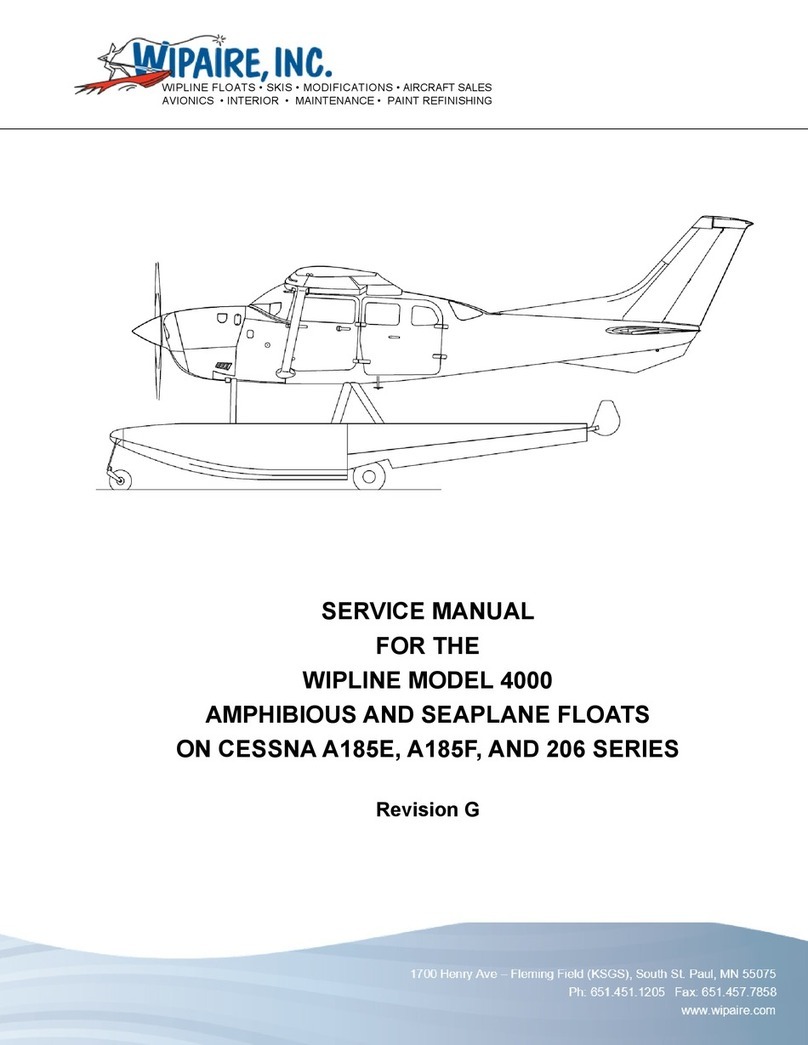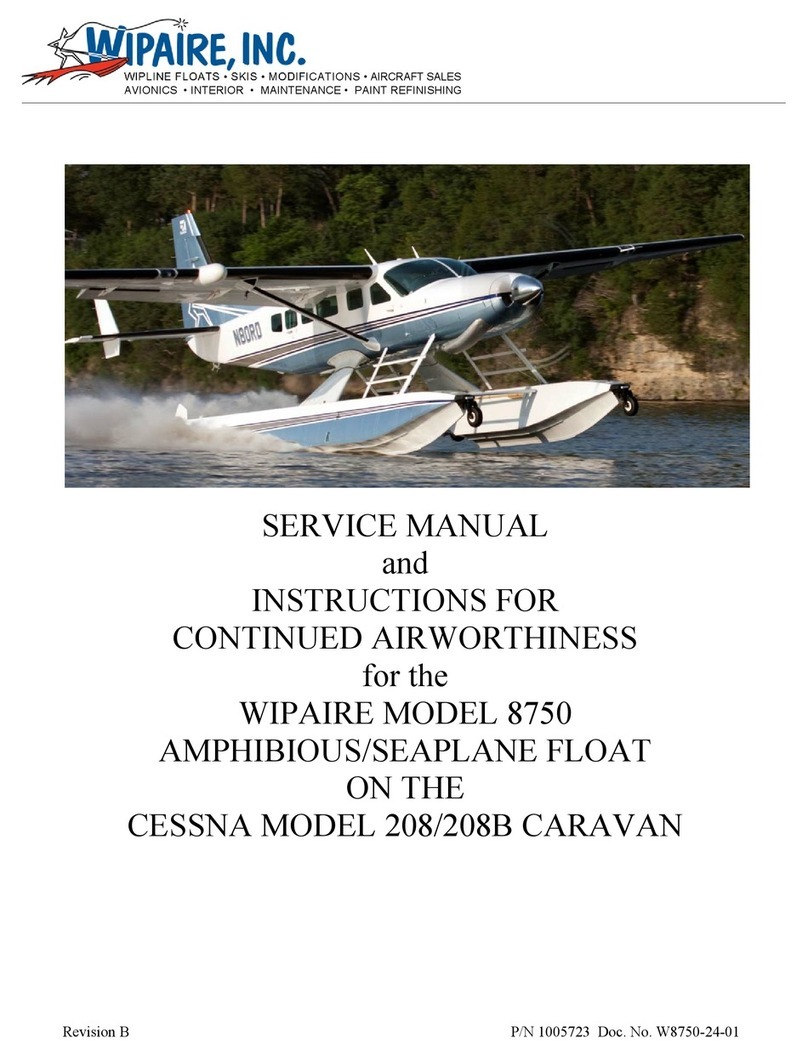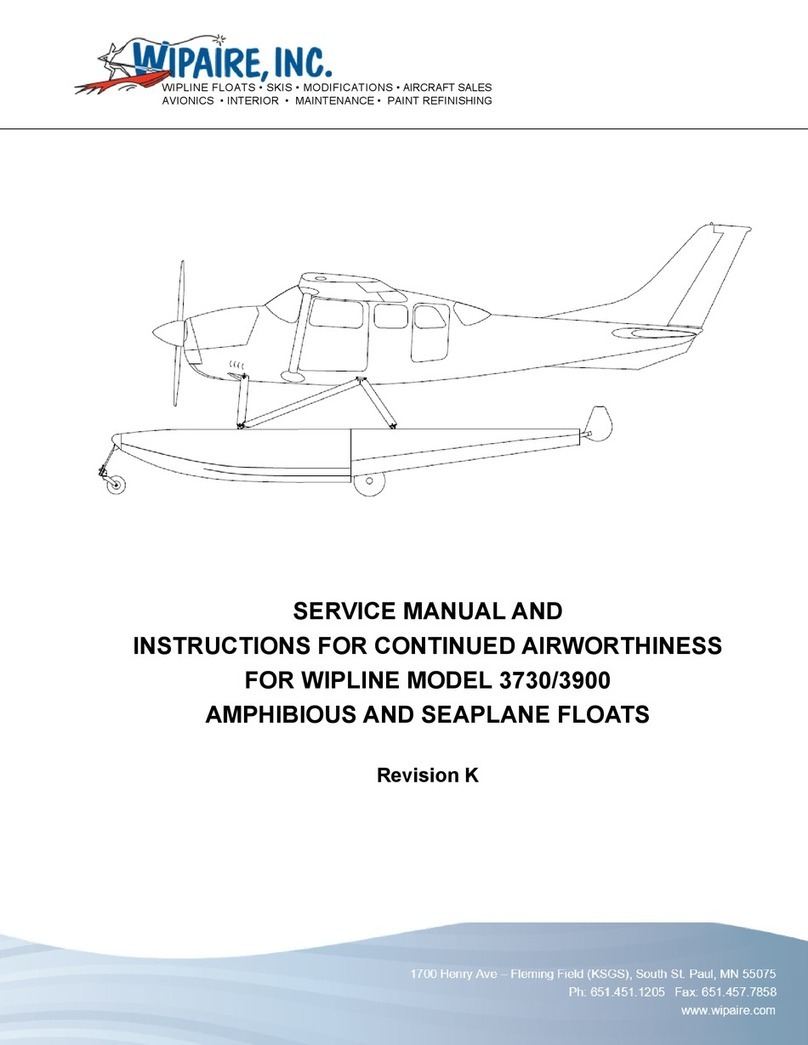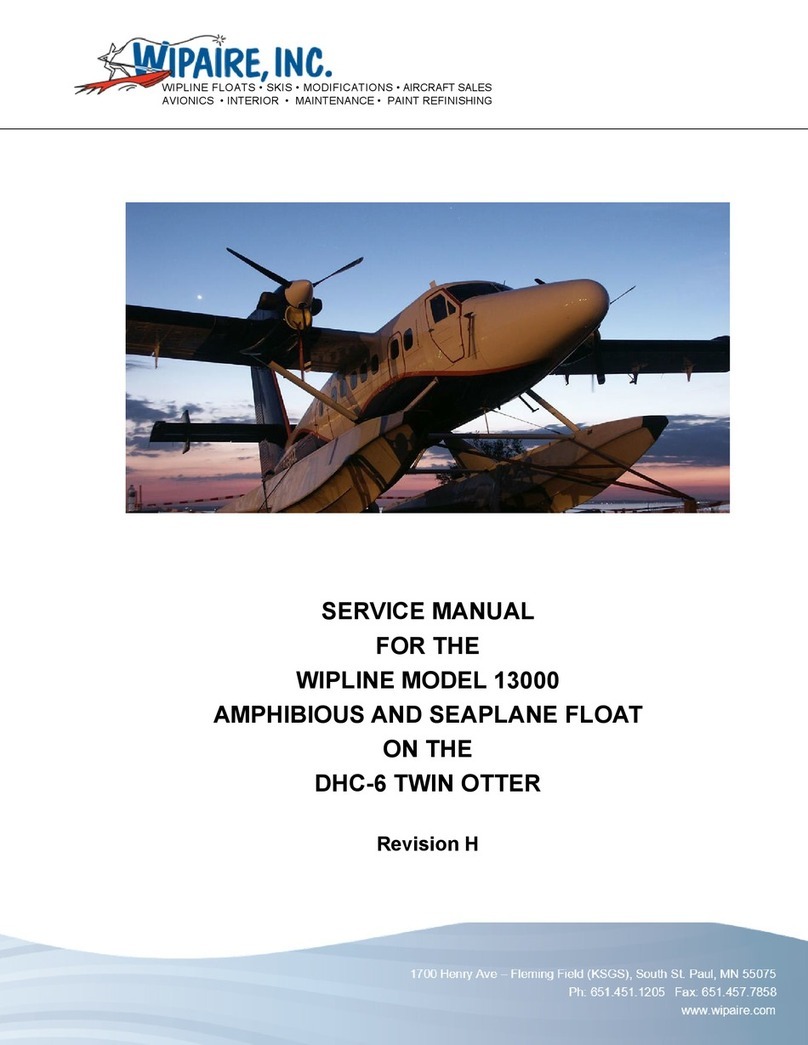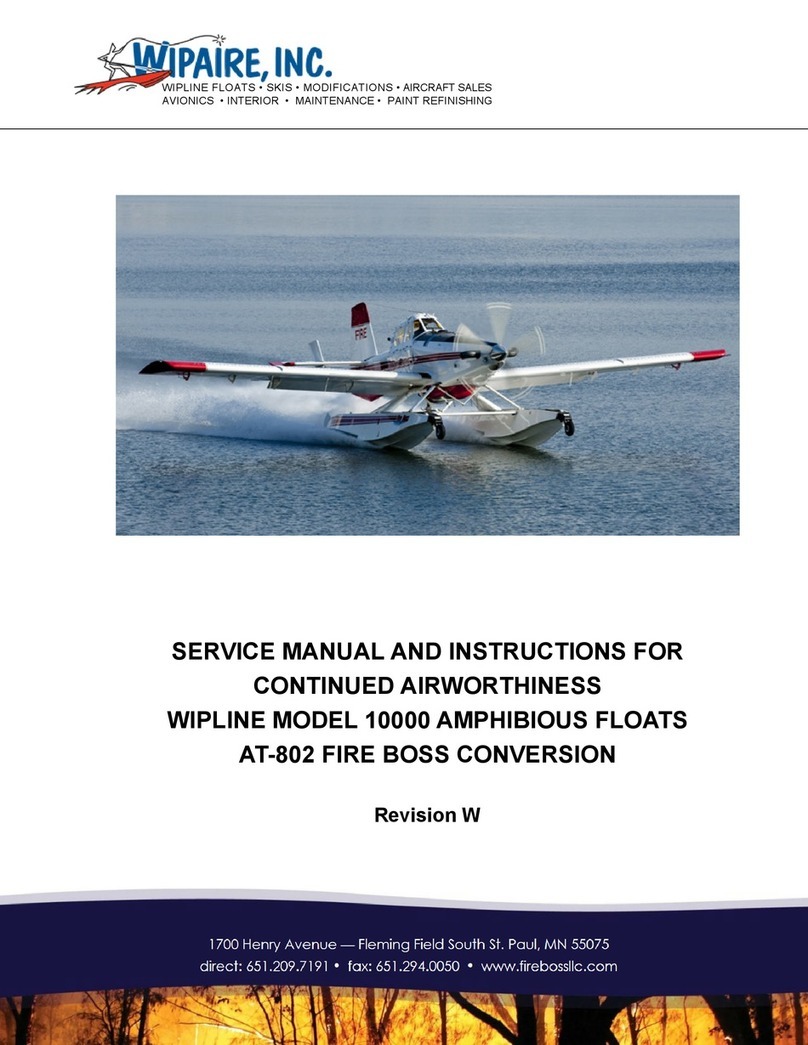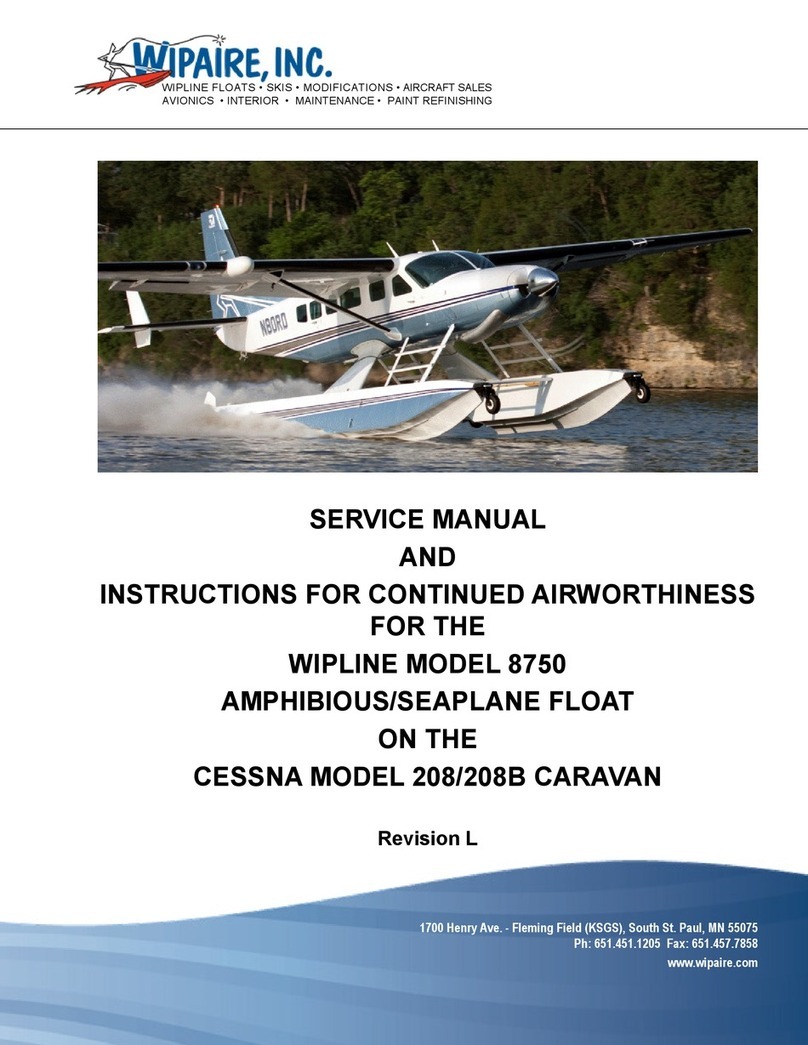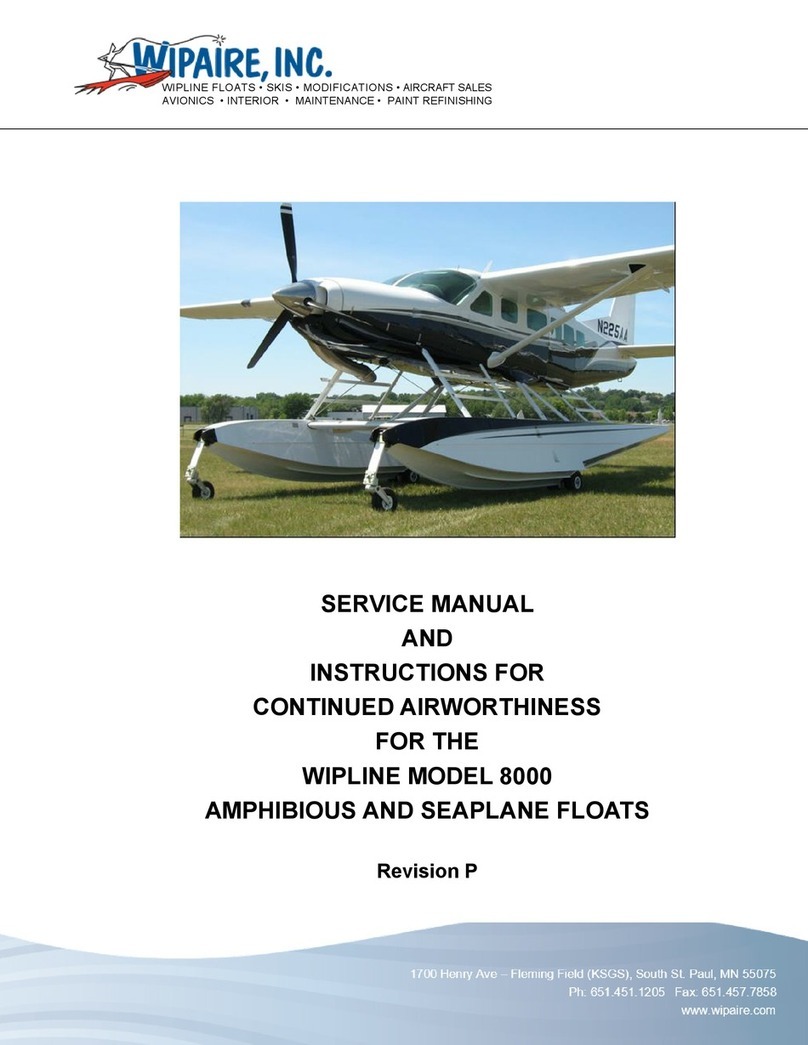
SERVICE MANUAL & ICA
10000 AMPHIBIAN FLOATS ON AIR TRACTOR AT-802A
Page 6 Revision U P/N 1002545
LIST OF FIGURES
FIGURE 2.1 SCHEMATIC - HYDRAULIC SYSTEM ..............................................................................27
FIGURE 2.2 SCHEMATIC - ELECTRICAL SYSTEM .............................................................................28
FIGURE 2.3 LAYOUT – MAIN GEAR ......................................................................................................29
FIGURE 2.4 CARRIAGE ASSEMBLY – MAIN GEAR ............................................................................30
FIGURE 2.5 ASSEMBLY – MAIN GEAR SHOCK STRUT .....................................................................31
FIGURE 2.6 ASSEMBLY – MAIN GEAR ASSEMBLY ............................................................................32
FIGURE 2.7 ASSEMBLY – MAIN GEAR DRAG LINK............................................................................33
FIGURE 2.8 ASSEMBLY – MAIN GEAR WHEEL AND BRAKE ............................................................34
FIGURE 2.9 ASSEMBLY – NOSE GEAR BOX AND RETRACTION ....................................................35
FIGURE 2.10 ASSEMBLY – NOSE GEAR LOWER END ......................................................................36
FIGURE 4.1A ASSEMBLY – SCOOPING SYSTEM ...............................................................................47
FIGURE 4.1 ASSEMBLY – SCOOPING SYSTEM - COMPLETE .........................................................46
FIGURE 4.2 ASSEMBLY – CYLINDER PROBE JACK ..........................................................................48
FIGURE 5 SCHEMATIC – PLUMBING – FOAM SYSTEM....................................................................51
FIGURE 8 WATER RUDDER STEERING AND RETRACTION SYSTEM ...........................................59
FIGURE 11.1 INSTRUMENT PANEL.......................................................................................................66
FIGURE 11.2 INSTRUMENT PANEL (CIRCUIT BREAKER).................................................................67
FIGURE 12.0 SCHEMATIC – AUXILIARY INSTRUMENT PANEL........................................................71
FIGURE 12.1 SCHEMATIC – CIRCUIT BREAKER PANEL...................................................................72
FIGURE 12.2 SCHEMATIC – INSTALLATION – ANGLE OF ATTACK ................................................73
FIGURE 12.3 AOA FLAP CALIBRATION READINGS ...........................................................................74
FIGURE 12.4 SCHEMATIC – INSTALLATION – FOAM TANKS/PUMPS ............................................75
FIGURE 12.5 SCHEMATIC – INSTALLATION – BILGE PUMPS .........................................................76
FIGURE 12.6 SCHEMATIC – INSTALLATION – SCOOP/FILL SYSTEM ............................................77
FIGURE 12.7 SCHEMATIC – INSTALLATION – PROBE POSITION ..................................................78
FIGURE 12.8 SCHEMATIC – INSTALLATION – PDR 60 AUDIO .........................................................79
FIGURE 12.9 SCHEMATIC – INSTALLATION – ITT / EXCESS POWER LIGHT ...............................80
FIGURE 12.10 SCHEMATIC – INSTALLATION – WATER IN FLOAT SENSORS ..............................81
FIGURE 13.1 TYPICAL SKIN REPAIRS .................................................................................................86
FIGURE 13.2 TYPICAL SKIN REPAIRS .................................................................................................87
FIGURE 13.3 TYPICAL SKIN REPAIRS .................................................................................................88
FIGURE 13.4 BULKHEAD ACCESS HOLES..........................................................................................89
FIGURE 13.5 GUNWALL EXTRUSION REPAIR ...................................................................................91
FIGURE 13.6 FORWARD CHINE EXTRUSION REPAIR .....................................................................92
FIGURE 13.7 MAIN KEEL EXTRUSION REPAIR ..................................................................................93
FIGURE 13.8 AFT KEEL EXTRUSION REPAIR ....................................................................................94
FIGURE 13.9 AFT CHINE EXTRUSION REPAIR ..................................................................................95
FIGURE 15.1 EXAMPLE NOSE SPRING CRACK MEASUREMENTS (NOT TO SCALE) ............... 114
